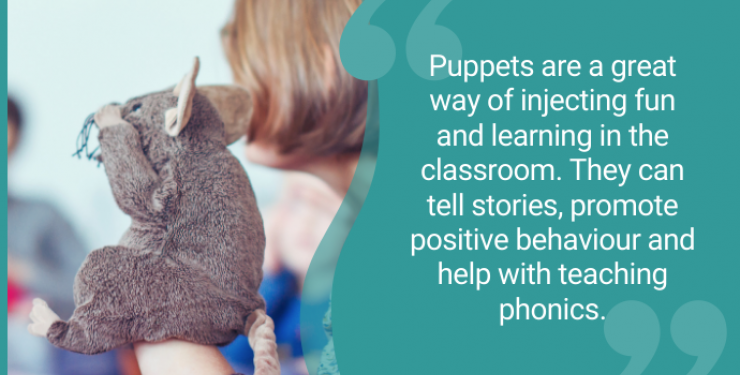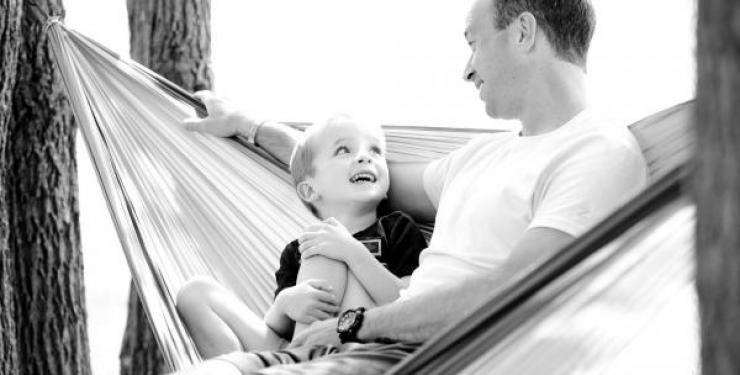Puppets are a great way of injecting fun and learning in the classroom. They can tell stories, promote positive behaviour and help with teaching phonics.
It's a puppet!
We have Brian Conley to thank for this heading – I’m showing my age! Over the years, puppets have become an integral part of my teaching practice. As a student teacher, many years ago, I remember my mentor creating a persona for a puppet and watching as the children were enthralled by this new member of our class. Since then, I have used the power of puppets to support children both emotionally and academically.
The magic of puppets
Using puppets with young children is a great way to inject some fun into the classroom. I have several puppets with their own personalities and back stories. My family of puppets sometimes behave badly or do silly things. White Mouse is a small hand puppet who only appears during Phonics sessions. He ‘lives’ in a string bag, and I ask the children to wake him by chorusing ‘Wakey, wakey White Mouse!’. He pops out and says ‘Hello’ to the children. When we are learning about initial sounds, White Mouse hides in his bag, and after rummaging around for a while, he appears holding a toy. The children tell White Mouse if the toy begins with the initial sound that we are learning. Otto is a puppet with hands that I can use to sign with Makaton. Rather disgustingly, he sometimes picks his nose, and the children love to tell him to get a tissue and wash his hands. He makes counting errors, and the children give him advice on how to improve this skill. Chester, a large, furry chimpanzee, often joins us for circle times to promote discussions about emotions and feelings.

Believe in the magic
When I am using the puppet, I believe him to be real. If you believe that the puppet is real, the children will believe it too and this is where the magic happens! I never tell the children that the puppet is a real animal. If a child asks, I cover the puppet’s ears and say ‘No, he’s a puppet, but he doesn’t know he is a puppet.’ The children like the idea that we have a shared understanding (we are playing) and they are being kind to the puppet by not telling him. I don’t let the children touch the puppet and when I’m not using the puppet to teach, they are sleeping in a string bag or sitting on a chair. It’s important to model care and respect and the more you treat your puppets like a living thing, the more the children will believe the magic.
The best way to be comfortable using a puppet is to ‘have a go’. Remember to keep your puppet moving when it is in your hand, flick its tail, nod its head, or sway the puppet gently from side to side. My puppets don’t speak aloud, they only whisper to me and I tell the class what they are saying. If you do want your puppet to talk, you may want to consider which voice you use. I’ve found that relaying the puppet’s questions to the children has worked the best.
Meet and greet
I like to start the year by introducing my puppets to the children during transition visits to school. Introducing your puppet to the class should be planned. The puppet needs to make a memorable entrance into your room, so that children are excited to have it return day after day.
My last bit of advice for using a puppet in the classroom is to consider the character of your puppets because children like to ask questions and find out information. What do they like to eat? Where do they like to play? Who do they live with? This is a great opportunity to introduce equality and diversity into your classroom.
There are lots of opportunities through the year for our puppet friends to support learning:
- introduce different topics. Chester has helped me talk to the children about the NSPCC Underpants Rule and sing the Pantasaurus song – loudly!
- send and receive messages, letters, pictures, and cards – my puppets always write back
- promote positive behaviours like checking the class are comfortable, calm, and ready for a story
- set challenges and problems for individual children or groups to solve – Otto was wondering what material would be best to build a bridge for a troll…
The joy of using puppets, who are part of the classroom and have their own persona, is clear when I meet pupils that I taught some years ago. Frequently, pupils and their parents/carers ask about White Mouse and Chester and remember what they were learning at the time – that’s the power of puppets.




